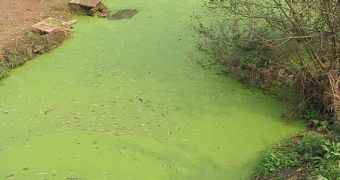Scientists have recently determined that one of the main reasons why algal blooms spread across the surface of lakes, rivers, seas and oceans is the fact that top predatory fish in these ecosystems are being hunted. The animals usually keep algae in check, but, as they disappear, the organisms spawn out of control. They are extremely dangerous because they have the ability to block sunlight from entering the waters below their levels, creating havoc in the trophic chain, and destabilizing the ecosystems.
The new find adds to different studies, which show that human chemicals, such as nitrogenous fertilizers and detergents, also play an important part in promoting excessive algal growth. The study that showed predatory fish-stock depletion to be a cause of the blooms was conducted in the Baltic Sea, by researchers from the University of Groningen, in the Netherlands. The group was led by expert Britas Klemens Eriksson, who first observed that the blooms tended to appear in areas where predatory-fish stocks had been depleted, or about to be so, Nature News reports.
The team's investigation covered more than 700 kilometers of coastline, and looked especially for population health levels in two species, the predatory pike (Esox lucius) and perch (Perca fluviatilis). The scientists then analyzed data on smaller fish and algal populations in the same regions, and managed to discover some fairly intriguing patterns. “In areas where there were strong declines in perch and pike there were massive increases in smaller fish and large blooms of algae,” Eriksson explains. The team found a 50-percent chance for an area to develop algal bloom, if the two species were not present there. If they were, the chances would be reduced to ten percent.
“This is the first study to show that top predators are linked to the formation of macroalgal blooms,” Canadian marine biologist Heike Lotze, from the Dalhousie University in Nova Scotia, adds. The investigation also saw the use of nitrogenous fertilizer pellets, which were dumped and confined to some regions. In those areas, algal blooms appeared more often, and on larger surfaces, exactly as expected. The scientists say that, even when no pellets were added, the lack of predatory fish was enough to trigger algal blooms.

 14 DAY TRIAL //
14 DAY TRIAL //